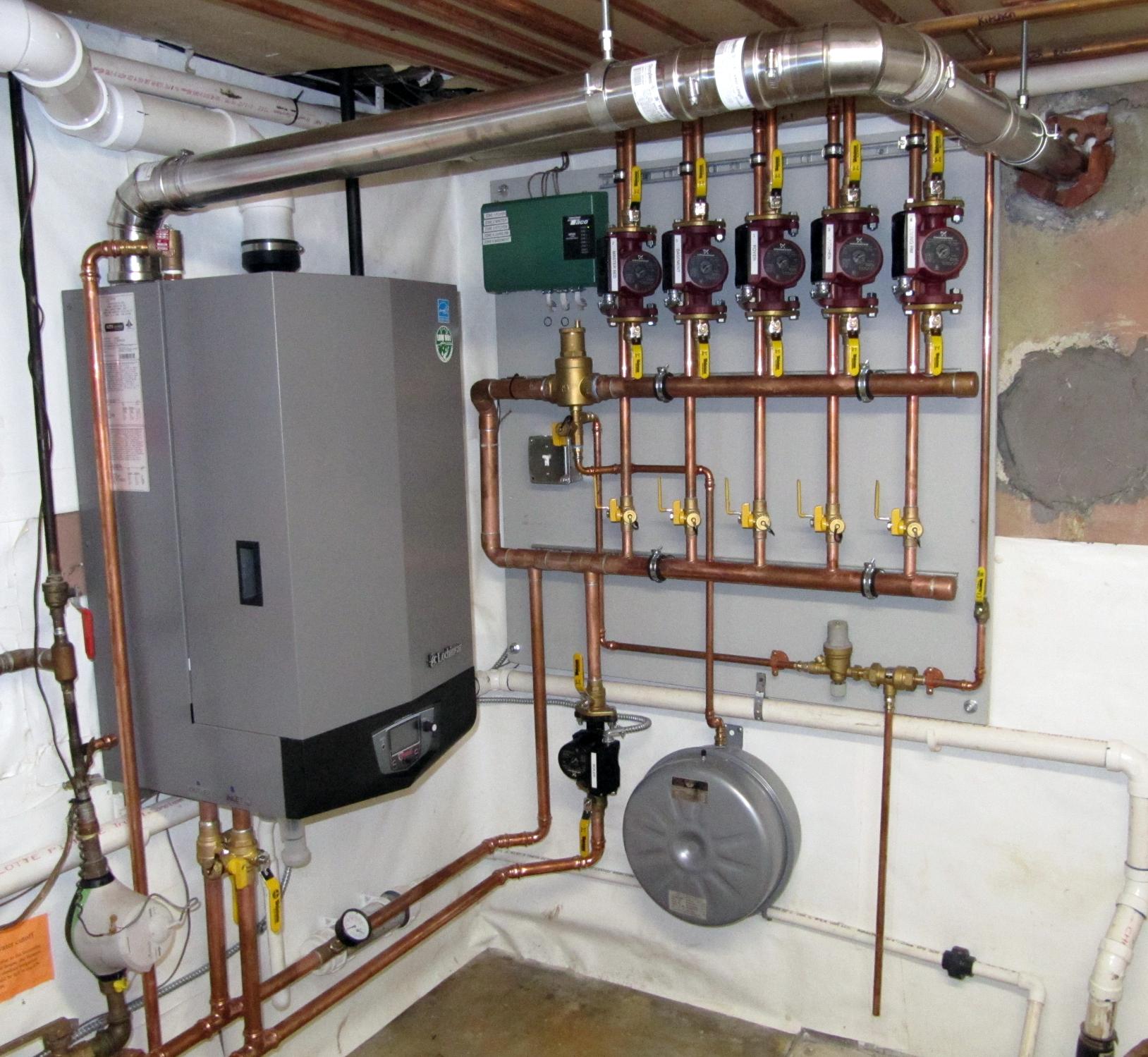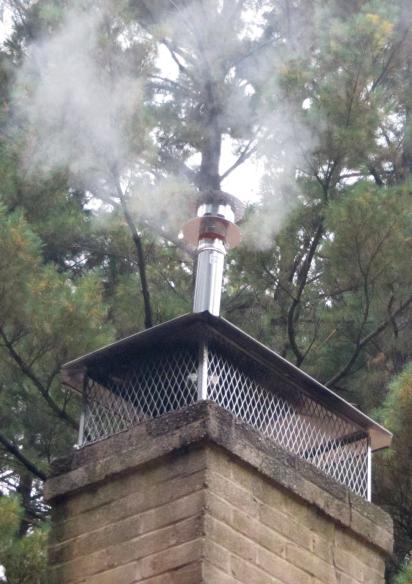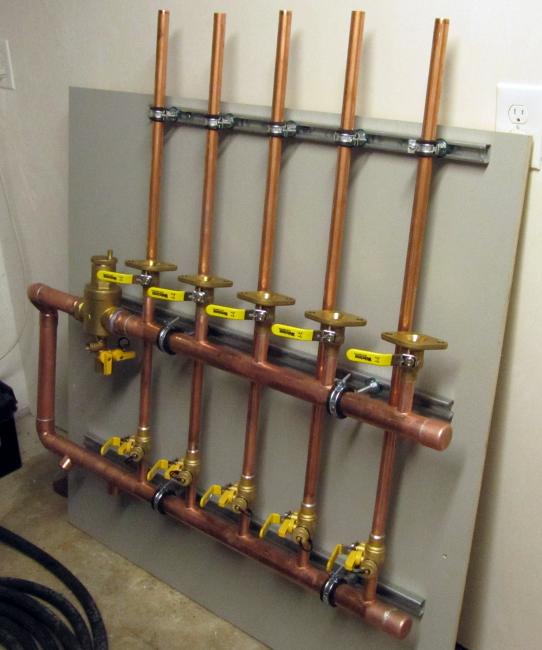 This is my fourth blog entry on the conversion of our heat and hot water system to gas. The first, Gas, showed how a gas line was brought in from the street to our house. The second, Gas (bis), documented our old heating system before it was demolished. The third, Demo day, showed the old system being taken apart and removed for disposal. This entry shows the new system after installation.
To build the system, they assembled the core of the piping in their office, mounted on a 112 cm. (44 inch) square piece of plywood. The picture to the left shows it standing in a corner of the boiler room. The vertical pipes were long enough to account for any length needed after mounting, but could be cut to the needed length. You can click on any photo in this entry to enlarge it. Then return here with your browser's "Back" button. Here it is installed:  Our previous oil-fired boiler, documented in the entry Gas (bis), had a single circulating pump, and a set of "zone valves" that opened to allow hot water to be sent by that single pump to each zone of the house, when called for by a thermostat in that zone. The new system has five maroon-colored circulating pumps, one for each zone, circulating water around the loop of thick, mostly horizontal pipes that can be seen in the photo. As needed, hot water is introduced from the boiler, entering the loop in the left-most of the two pipes at the bottom (it has a temperature/pressure gauge on it). The right-most of these two pipes returns this water to the boiler using the black circulating pump. This is a design called "Closely Spaced Tees".
And then, after an inspection by the Town of Wayland, and the "setting" of a gas meter by National Grid:  Shown above: the smoke that issued from the chimney when the boiler was first fired up.
Well, yes, even uglier than I expected. The photo to the left shows what it looked like after completion of the system, with the down-pipe to the generator still not added. But it turns out there are reasons for what it looks like, and how high and massive it is, and much of it has to do with the generator. To have adequate capacity for both the boiler and the generator, the pipes must expand to two-inch diameter (5 cm.) immediately above the meter outlet. The inspector then likes to see the master cutoff valve as soon as possible. But even were he to allow an elbow before that valve, a right turn, while keeping the entire structure lower, would entail a longer run of the heavier 2-inch pipes, and the pipes would start to get close to the windows on the right. We initially complained about the appearance of the structure, and particularly its height. But after the plumber discussed all the alternatives with us, Margie and I decided to retain it as he had originally built it. We'll put something in front of it - probably a tall bush. We have plenty of room to do so. It got done just in time. The system was ready to go on Monday, September 30. But we had to wait an entire week for National Grid to get around to setting the gas meter, so the boiler wasn't turned on until Monday, October 7. The evening of Tuesday, October 8, our recent spell of unseasonably warm weather ended, and the night got quite cold. But we were warm and toasty with our new heating system. Also that evening, an item on the news reported an estimate of the cost of heating using various fuels. We can apparently expect to spend on gas about a third of what we've been paying for oil. It's also whisper quiet - the old system used to rumble quite a bit when running. The new unit is reported to be considerably more efficient than our previous, 25-year-old system. The smell of oil from the boiler room has vanished, and the room is a lot cleaner. It also has a good deal more space in it, particularly with the removal of the oil tank. Earlier today I started to make use of some of that space by adding shelves on the open wall opposite the system. We also now have plentiful, 50 degrees Celsius (122 degrees Fahrenheit) hot water. I was running the previous 18-year-old water tank at a lower temperature, because it was beyond its predicted life. I wanted to minimize the chances of a leak, or worse, a rupture, which had happened to an earlier unit of the same type (see footnote 1 of an earlier entry for more detail). Thus so far, we love it. And the house hasn't blown up yet.   Note 1: "Habemus Papam" are the Latin words, meaning "We have a Pope", that are used to announce the introduction of a new Pope by the Vatican. But the initial report of a successful election is a column of white smoke issuing from a chimney atop the Sistine Chapel, where the papal enclave is held. OK, the smoke from my chimney was not reported around the world. But it was important to Margie and me - it meant that we can once again take hot baths. Click the next link to see a wonderful virtual tour of the Sistine Chapel. Note: viewing it requires Shockwave Flash, and the page takes a long time to load (I had to wait through two warnings that the page was unresponsive, but it eventually appeared). It's worth the wait - it's almost better than being there. You aren't packed in shoulder-to-shoulder with other tourists, and you don't have to listen to the Vatican Guards periodically trying to "shush" the crowd. [return to text]  |


